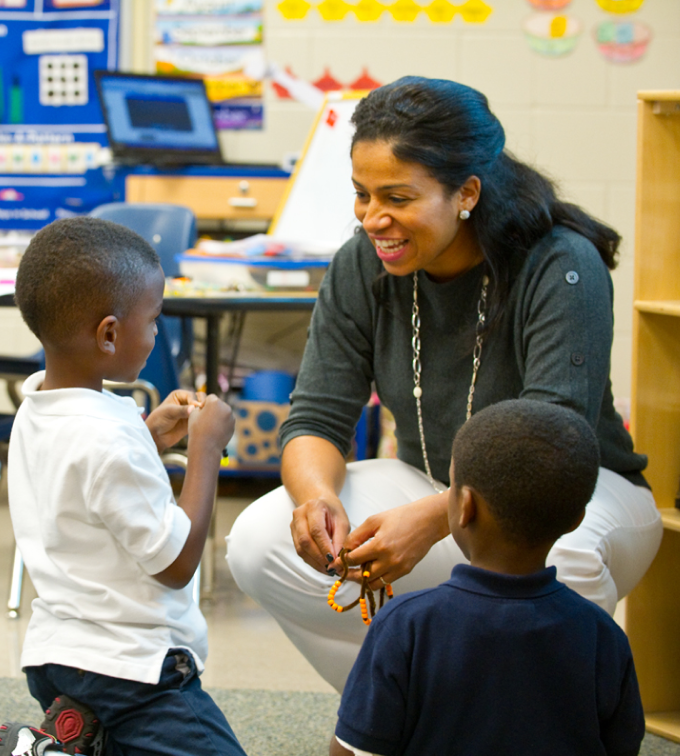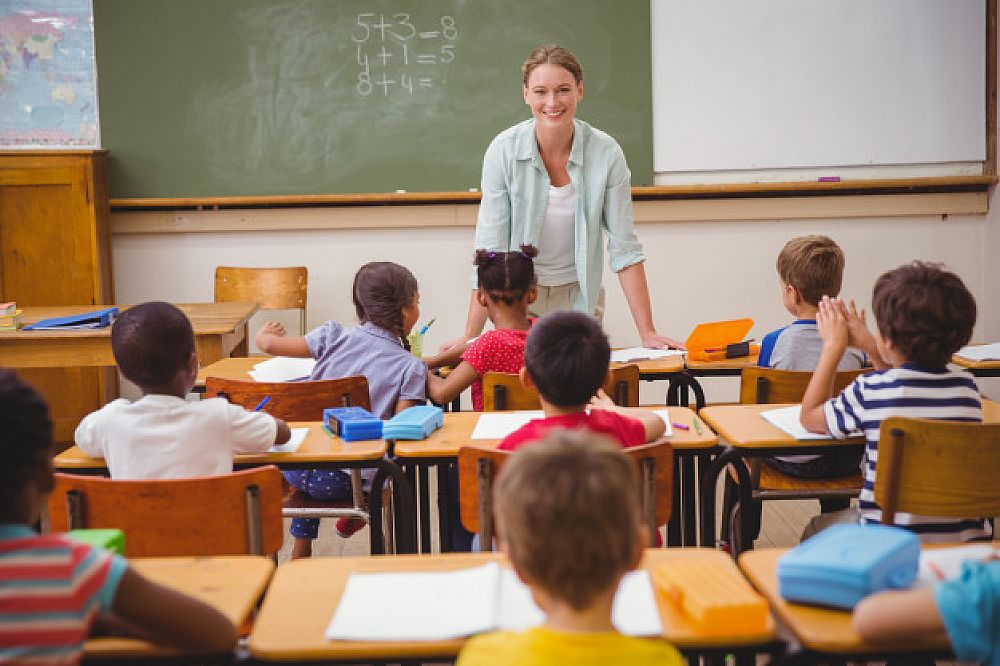Unlock Your Child’s Potential with Primary Science Tuition Singapore
Unlock Your Child’s Potential with Primary Science Tuition Singapore
Blog Article
A Comprehensive Overview to the Various Knowing Approaches in Primary Science Guideline
The expedition of varied knowing techniques in main scientific research guideline provides a chance for teachers to boost student involvement and comprehension dramatically. By taking a look at hands-on discovering methods, inquiry-based approaches, and collaborative approaches, we can determine reliable techniques that cater to various finding out designs.

Hands-On Discovering Methods
Hands-on knowing techniques play a crucial duty in main science guideline, engaging trainees in active expedition and experimentation. These methods permit students to connect straight with materials and phenomena, cultivating a deeper understanding of clinical principles. By using manipulatives, versions, and real-life experiments, teachers develop an atmosphere where trainees can observe, assume, and evaluate their concepts.
Such techniques not only improve understanding however also cultivate essential thinking and analytic abilities. When trainees get involved in activities like building straightforward makers, planting seeds, or conducting chain reactions, they are encouraged to ask questions and look for responses through their own monitorings. This experiential strategy assists to demystify complicated scientific principles, making them more relatable and accessible.
In addition, hands-on understanding promotes partnership among peers, as pupils often operate in teams to perform experiments or share findings. This teamwork not just enhances their knowing experience but additionally creates essential social skills. Eventually, integrating hands-on techniques in primary science direction cultivates a long-lasting love of understanding and curiosity concerning the environment, laying a strong structure for future academic searches in scientific research and past.
Inquiry-Based Knowing
Inquiry-based discovering is an instructional technique that encourages trainees to ask inquiries, examine phenomena, and construct their own understanding of clinical concepts. This method shifts the focus from typical teacher-led instruction to a much more student-centered experience, where learners take the effort in their educational journey. By promoting interest, inquiry-based discovering advertises much deeper involvement with the product, allowing trainees to discover subjects in a significant context.
In method, this technique typically involves hands-on experiments, observations, and crucial thinking tasks that straighten carefully with the scientific approach. Pupils are motivated to create hypotheses, design examinations, and examine information, which cultivates essential skills such as analytical and analytical reasoning. The duty of the teacher in this structure is to help with expedition, leading students with the query procedure while encouraging independent thought and cooperation.
Moreover, inquiry-based knowing supports a feeling of ownership over the understanding procedure, inspiring trainees to go after expertise actively. This method not just enhances understanding of scientific concepts but also fosters a long-lasting love for knowing, furnishing pupils with the abilities essential to browse a progressively complicated world.
Collaborative Knowing Approaches
Joint knowing techniques equip pupils to participate in significant communications with peers, cultivating a shared responsibility for their instructional results. In primary scientific research instruction, these methods motivate learners to collaborate to discover scientific concepts, address issues, and perform experiments (primary science tuition Singapore). By taking part in group activities, trainees can leverage diverse perspectives, enabling richer understanding and address retention of clinical understanding
One key aspect of collaborative learning is the focus on communication abilities. Pupils must verbalize their ideas, listen actively to others, and bargain concepts, all of which are crucial expertises in both real-world and scholastic contexts. This social communication not only boosts their understanding of scientific concepts but likewise promotes synergy and dispute resolution abilities.
Furthermore, collaborative knowing usually leads to boosted motivation and interaction. When trainees see the value of their contributions within a team, they are most likely to take possession of their knowing journey. Teachers can facilitate this process by making organized team tasks that straighten with curriculum objectives while supplying support on reliable cooperation strategies. Generally, including joint discovering methods in key scientific research direction grows a dynamic learning environment that prepares pupils for future academic and social obstacles.
Modern Technology Assimilation in Science
The assimilation of technology in key science direction boosts learning experiences by supplying cutting-edge tools and sources that sustain various training methodologies, including collective understanding - primary science tuition Singapore. Using electronic systems, simulations, and interactive applications allows pupils to involve deeply with clinical ideas, assisting in a more hands-on technique to learning
Digital laboratories, for instance, allow students to carry out experiments securely and efficiently, advertising inquiry-based discovering. These tools can imitate real-world clinical situations, allowing students to imagine complicated procedures that would be This Site tough to replicate in a standard classroom setting. Additionally, technology cultivates interaction and collaboration among students, as they can share findings and collaborate on projects with online systems.
Furthermore, multimedia presentations and instructional video clips can enrich lessons by dealing with diverse learning styles, making abstract principles much more accessible. Information analysis tools additionally encourage trainees to accumulate and translate scientific information, enhancing vital assuming skills. Overall, the strategic unification of modern technology in key science instruction not just improves engagement but likewise prepares trainees for a technically innovative society, furnishing them with necessary abilities for future clinical undertakings.
Separated Direction Strategies
Separated instruction approaches are crucial for resolving the diverse demands of learners in main scientific research education and learning. These methods make it possible for educators to customize their teaching methods to fit varying abilities, passions, and finding out styles within the class. By utilizing set apart direction, educators can produce a comprehensive setting that cultivates interaction and improves understanding of clinical principles.
One effective technique is to use versatile grouping, which allows trainees to collaborate with peers at comparable skill levels or with differing point of views. This strategy urges peer learning and advertises critical reasoning. In addition, supplying options in tasks can encourage students, enabling them to select tasks that resonate with their passions while still fulfilling curricular purposes.
Additionally, integrating tiered jobs is an additional useful method. By developing jobs with varying degrees of intricacy, educators can guarantee that all trainees are appropriately tested, no matter their effectiveness. Using developmental analyses to gauge understanding further enables instructors to change their training approaches dynamically, making certain that each learner receives the assistance they require.
Ultimately, applying differentiated guideline approaches in primary science education not just enhances pupil discovering outcomes however additionally cultivates an interest for science, preparing trainees see this page for future academic searches.

Verdict
In recap, reliable primary scientific research guideline demands a diverse method that includes hands-on knowing, inquiry-based techniques, and joint strategies. The integration of modern technology and differentiated instruction further provides to varied discovering styles, promoting an environment favorable to exploration and vital thinking.
The expedition of varied learning approaches in key scientific research direction presents a chance for educators to boost trainee interaction and comprehension significantly.Hands-on learning methods play a crucial function in primary scientific research direction, engaging pupils in energetic exploration and trial and error.Inquiry-based knowing is an instructional approach that motivates trainees to ask questions, check out phenomena, and construct their own understanding of scientific concepts.Joint understanding methods encourage pupils to involve in significant interactions with peers, cultivating a common duty for their instructional outcomes. Generally, integrating collaborative discovering methods in primary science guideline grows a vibrant understanding atmosphere that prepares trainees for future academic and social obstacles.
Report this page